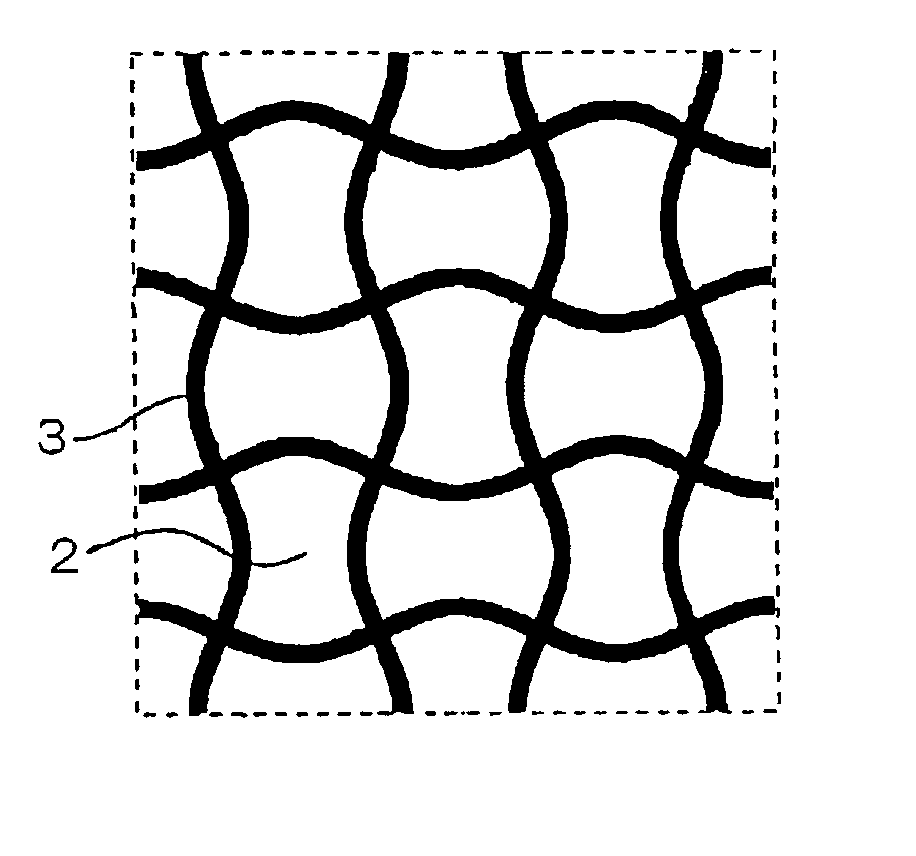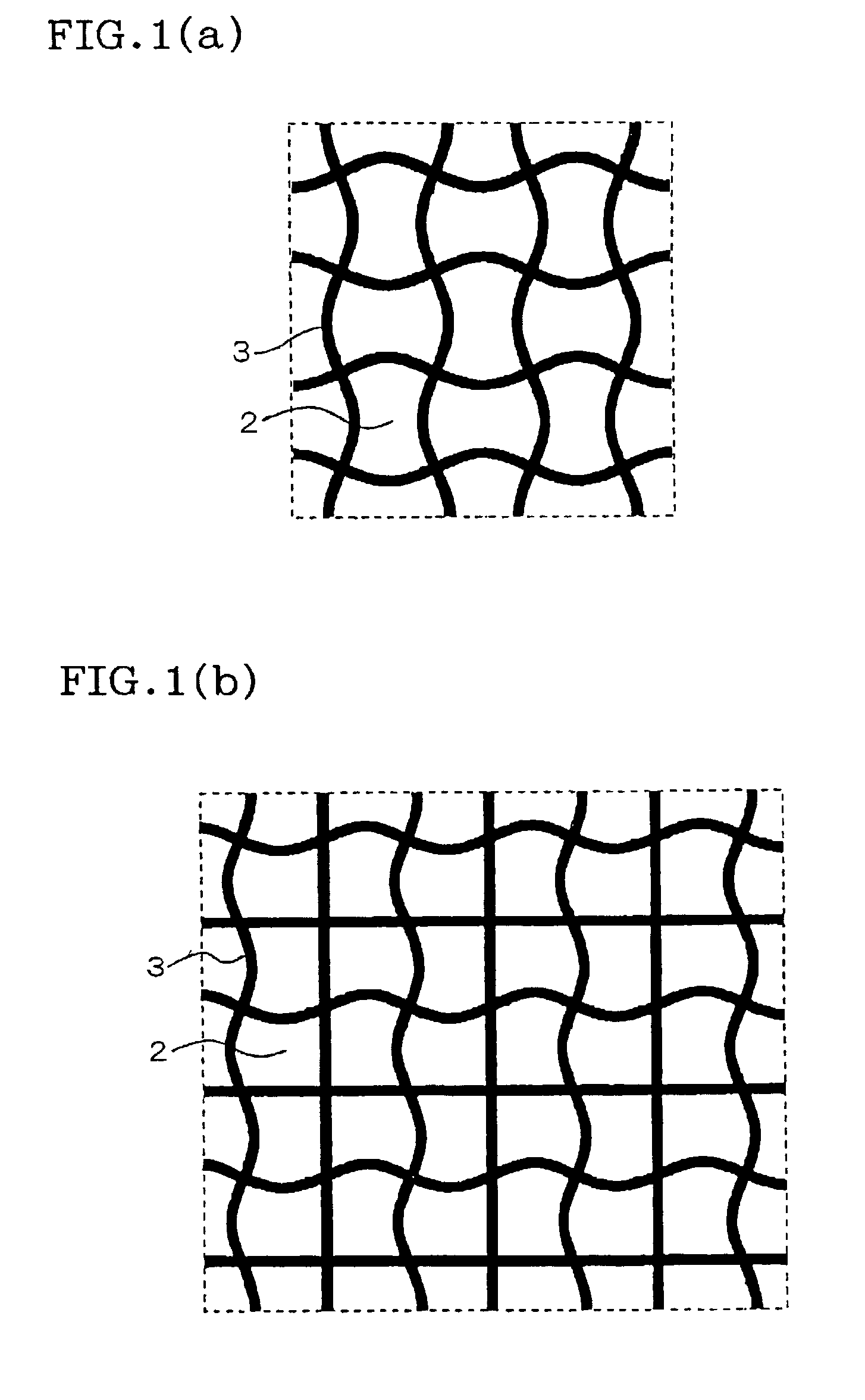Ceramic filter and filter device
- Summary
- Abstract
- Description
- Claims
- Application Information
AI Technical Summary
Benefits of technology
Problems solved by technology
Method used
Image
Examples
example 2
Coating of the Anchor Substance on the Surface of the Ceramic Filter
[0052] A commercially available Al.sub.2O.sub.3 powder (specific surface area: 200 m.sup.2 / g) was immersed in a H.sub.3PO.sub.4 solution and, after stirring with a pot mill for 2 hours, moisture in the powder was evaporated off to dryness. The residual powder was crushed in a dry state followed by firing at 700.degree. C. for 3 hours. An Al.sub.2O.sub.3 sol and water were added again to the powder of .gamma.-Al.sub.2O.sub.3 impregnated with the P component, and the mixture was ground again in a wet state in the pot mill to prepare a wash-coat slurry. Then, the slurry was wash-coated on a small honeycomb piece as the same sample piece as used in Example 1, and the sample piece was dried. The sample piece was fired thereafter at 700.degree. C. for 1 hour in an electric furnace, thereby obtaining a honeycomb sample in which phosphorous P (referred to as an anchor substance) was disposed on the surface of the partition ...
example 3
Filter Device Having the Pre-Filter
[0057] A cordierite honeycomb having a diameter of 144 mm and length of 70 mm, a thickness of the partition wall of 152 .mu.m and a cell density of 62 cells / cm.sup.2 was impregnated with P by the same method as in Example 1 to obtain a pre-filter. A ceramic filter was also prepared by sealing a cordierite honeycomb, having a diameter of 144 mm and a length of 150 mm, a thickness of the partition wall of 305 .mu.m and a cell density of 31 cells / cm.sup.2, of which cells are sealed alternately on an inlet side face and an outlet side face to form a checkered pattern on both sides. The ceramic filter was combined with the pre-filter, and cased in a can having an appropriate shape to obtain a filter device comprising the pre-filter and ceramic filter.
PUM
| Property | Measurement | Unit |
|---|---|---|
| Temperature | aaaaa | aaaaa |
| Reactivity | aaaaa | aaaaa |
Abstract
Description
Claims
Application Information
 Login to View More
Login to View More - R&D
- Intellectual Property
- Life Sciences
- Materials
- Tech Scout
- Unparalleled Data Quality
- Higher Quality Content
- 60% Fewer Hallucinations
Browse by: Latest US Patents, China's latest patents, Technical Efficacy Thesaurus, Application Domain, Technology Topic, Popular Technical Reports.
© 2025 PatSnap. All rights reserved.Legal|Privacy policy|Modern Slavery Act Transparency Statement|Sitemap|About US| Contact US: help@patsnap.com


